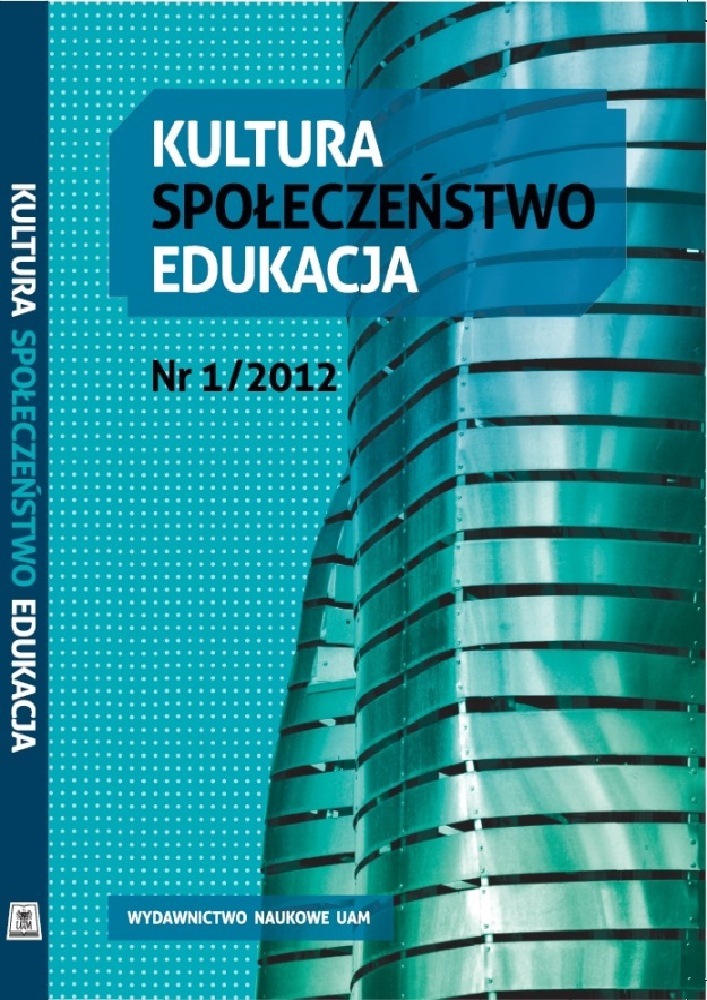Abstrakt
This article presents the problem of politics of difference realized within the American educational system, with a special emphasis on higher education. This politics is according to the author based on putting in the center of all educational actions the idea of diversity, as well in creating academic institutions. This key idea becomes in the American context a special significance, regarding the fact that the American society is based on ideology that celebrates multiculturalism and diversity as such. This article presents also an important for the contemporary situation in the United States problem of combining cultural and ethnic diversity on the economical category of difference between various classes. Furthermore, it seems to be more significant in the light of the economic crisis in recent years that affected also American education in the same extent.Bibliografia
American Association of University Professors. 2009. „The Annual Report on the Economic Status of the Profession, 2008–2009”. Academie, March-April: 13-93.
American Association of University Professors. 2010. Tenure and Teaching-Intensive Appointments (2010).
Bennett P.R., A. Lutz. 2009. „How African American is the Net Black Advantage? Differences in College Attendance Among Immigrant Blacks, Native Blacks, and Whites”. Sociology of Education 82 (1): 70-100.
Charles C.Z., V.J. Roscigno, K.C. Torres. 2007. „Racial Inequality and College Attendance: The Mediating Role of Parental Investments”. Social Science Research 36 (1): 329-352.
Dervarics Ch. 2010. „Public Colleges Do Poor Job with Minority, Low-Income Students, Study Says”. Diverse: Issues in Higher Education, January 14.
Douthat R. 2010. „Grading School Choice”. New York Times, October 10.
Faust D.G. 2007. Installation Address: Unleashing Our Most Ambitious Imaginings.
Faust D.G. 2008. „Baccalaureate Address to Class of 2008”. U.S. Supreme Court 02-241, June 23.
Heilig J.V., S.J. Jez. 2010. Teach For America: A Review of the Evidence. East Lansing, MI: The Great Lakes Center for Education Research and Practice.
June A.W. 2009. „Full-Time Instructors Shoulder the Same Burdens That Part-Timers Do”. Chronicle of Higher Education, October 18.
Kahlenberg R.D. 2007. „Invisible Men”. Washington Monthly, March: 61-63.
Kahlenberg R.D. 2010. „Disadvantages”. The New Republic, March 3.
Leonhardt D. 2004. „As Wealthy Fill Top Colleges, Concerns Grow Over Fairness”. New York Times, April 22.
„The Trouble with Diversifying the Faculty”. 2011. Liberal Education (Winter).
Mangan D. 2010. „Boys Club Bashed: Suit Alleges Goldman Bias Against Female Staffers. New York Post, September 16.
Modern Language Association. 2008. Education in the Balance: A Report on the Academic Workforce in English. New York.
Otterman S. 2010a. „Harlem Children’s Zone Gets $20 Million Gift”. New York Times, September 16.
Otterman S. 2010b. „Lauded Harlem Schools Have Their Own Problems”. New York Times, October 13.
Pryor J.H., S. Hurtado, V.B. Saenz, J.L. Santos, W.S. Korn. 2007. The American Freshman: Forty-Year Trends 1966 - 2006. Los Angeles.
Reed A., Jr. 2009a. The ‘Color Line’ ¬ en and Now: The Souls of Black Folk and the Changing Context of Black American Politics. W Renewing Black Intellectual History: The Ideological and Material Foundations of African American Thought, Boulder, CO.
Reed A., Jr. 2009b. „The Limits of Anti-racism”. Left Business Observer 121, September.
Licencja
Prawa autorskie (c) 2017 Walter Benn Michaels

Utwór dostępny jest na licencji Creative Commons Uznanie autorstwa – Bez utworów zależnych 4.0 Międzynarodowe.
